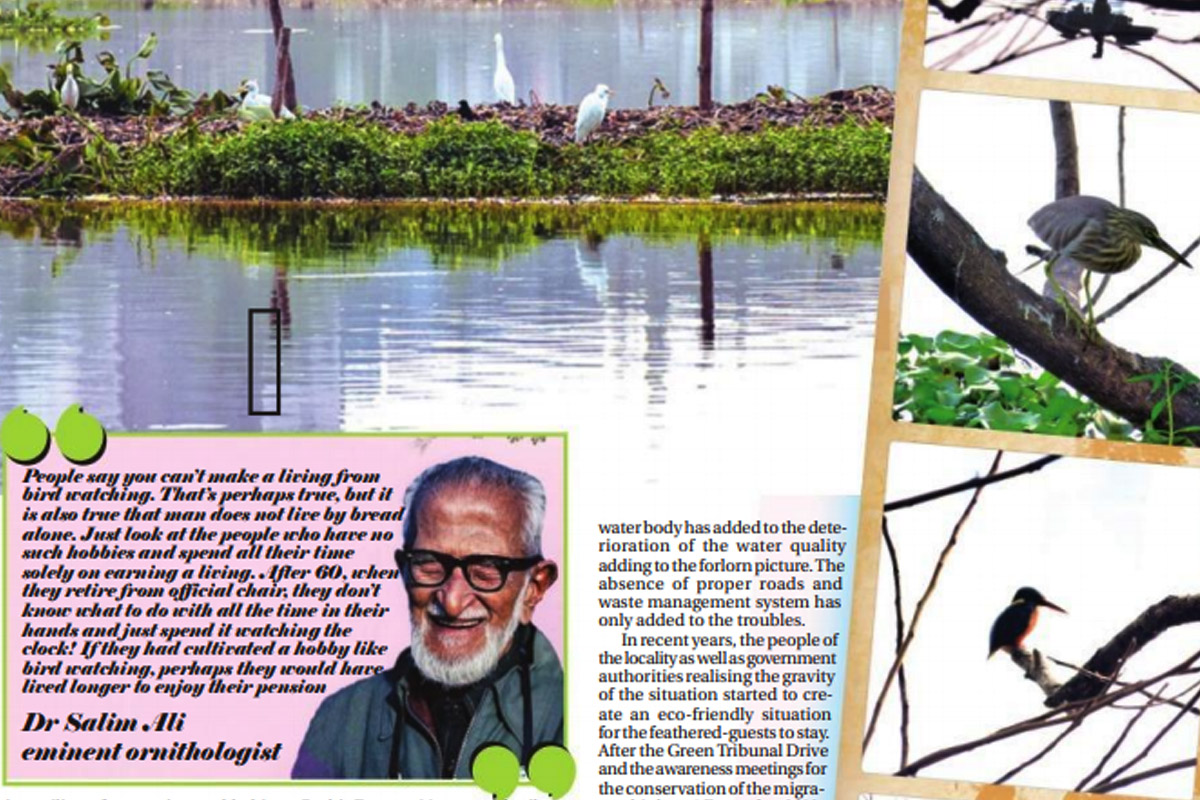Wetlands in China see over 550,000 migratory birds
Over 550,000 migratory birds have been spotted this spring in the four wetland nature reserves in China's Tianjin Municipality, local authorities said.
SPJS students visit Bengals Santragachi Jheel for a closer look at migratory birds during winter.

On a bright, sun-kissed winter afternoon, our excitement bubbled up as we set on our way to Santragachi Jheel. So far, we have only heard countless narratives from our parents, relatives and friends how years back they could spot from the window of passing trains, a lake teeming with birds, which looked nothing similar to the crows on our rooftops and the cranes at our neighbourhood ponds. On doing a bit more research, we came to know that Santragachi Jheel hosts thousands of migratory birds, who fly down from lands far, far away. Being city dwellers, we could not help but crave to see what colours were their feathers, what sounds did they make, how big were their wings and how beautiful has nature made them. But it turned out that our excitement bubbles were like the bubbles of soap which pop and disappear at the blink of an eye.
Crossing the majestic Vidyasagar Setu and then, negotiating the serpentine roads and narrow alleys, we reached our destination when our eager emotions melted into despair. The atmosphere was abuzz as vegetable sellers of the haat and the ‘toto’ drivers too waited for their customers while, lamentably, the birds could not be seen in numbers like we had expected. Santragachi Jheel is an enormous, 13,75,000 sq feet wetland situated adjacent to the Santragachi railway station on the west bank of river Hooghly is one of the largest habitats for more than 5,000 migratory birds. Flanked by crowded railway quarters, markets and small industries, the lake welcomes a large number of migratory birds. The lake is under the care of Howrah Municipal Corporation which is in charge of these islands and a variety of flora and fauna which attract these migratory birds.
And earlier, Santragachi Jheel made the bird watchers rejoice with arrival of the awaited guests. Birds such as Lesser Whistling-Duck and Gadwall migrate earlier followed by cormorants and the yellow-legged kingfisher. In the halcyon days, Northern Shoveller, Northern Pintail and Cotton Teal would flock to the Jheel between December and January.
Advertisement
Nature nourishes human without grievance but man’s avarice has no end. The uncontrollable greed in the form of urbanization has extinguished the life of the lake leaving behind large parts of debris, sewage and contamination. Birds, like most species, adapt rapidly to the changing milieu of vegetation and habitat types. However, the pernicious implications of global warming have led to birds avoiding places like Santragachij heel and flying to other points due to soaring temperatures. The timing of birds’ migration is determined by considering specific local habitat, and when the local municipal body destroyed the water hyacinths of this water body, damaging its eco-balance, a discernible decline of migratory birds was evident. Water hyacinths provide suitable nooks for birds to rest, extirpation of which causes scarcity of food as well. Expectedly, the birds migrate to other places in quest of food and shelter.
The last few years have seen a decrease in population of migratory waterfowl which are barely visible to bare eyes.
Staring at the deserted Jheel, Prabir Dutta a 30-year-old railway employee from Kharagpur expressed grief at the incapability of Corporation to clean-up the dump around the lake, making the Jheel less of a tourist attraction and more like a waste disposal site. His tired eyes looked with despair at the vastness of the lake and he couldn’t hide his disappointment. Indeed, in the last decade, the number of migratory birds had declined by a stupendous number.
According to Gopal Sarkar, a ‘toto’ driver near Santragachi railway station, the cause behind the scarcity of migratory waterfowl is the noise pollution. He recalled the memories of his childhood during winters, spent in relishing the sight of the birds chirping in their splendour. The constant dumping of waste by the surrounding human habitation and industrial complexes directly into the water body has added to the deterioration of the water quality adding to the forlorn picture. The absence of proper roads and waste management system has only added to the troubles.
In recent years, the people of the locality as well as government authorities realising the gravity of the situation started to create an eco-friendly situation for the feathered-guests to stay. After the Green Tribunal Drive and the awareness meetings for the conservation of the migratory birds on 1 December 2019, some hope has been instilled for the birds to return. The public initiative of cleaning the water hyacinths was not a great idea though. People can still hope for some restoration from the initiative. A change is the only hope which can draw the vibrant picture of a better future. For a man the immediate need is to be a part of the solution rather than being the cause of pollution thereby bringing a greener and sustainable environment for both men and nature to live in harmony.
Sanjana Podder, Disha Bhaumik,Ujjaini Ghosh, Madhumita Ghosh, Pushpak Sen, Paul Saikat Biswas and Rohit Bose, Statesman Print Journalism School.
Advertisement